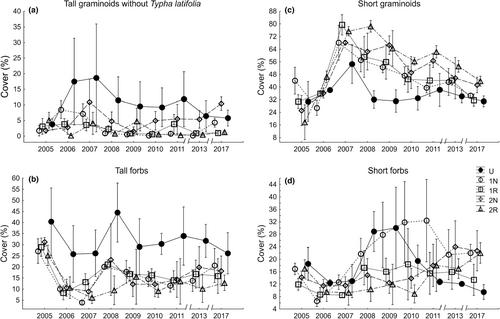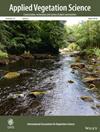What is a suitable management for Typha latifolia control in wet meadows?
Abstract
Aim
Typha latifolia causes serious problems in wet meadows by overgrowing and suppressing other native plants. To determine suitable management for T. latifolia control, we addressed the following question: What are the effects of long-term cutting at different frequencies (once or twice per year and no management) and biomass removal on cover and other characteristics of T. latifolia, and on sward productivity and plant species composition?
Location
Malá Strana nature reserve, Jizerské hory Mountains, Czechia.
Methods
A long-term experiment arranged in a randomised block design with three blocks was established in 2005. Data were collected from five treatments: unmanaged control; cutting once a year in June without biomass removal and with biomass removal; cutting twice per year in June and August without biomass removal and with biomass removal. Percentage cover of T. latifolia and other vascular plant species was visually estimated and T. latifolia characteristics (tiller density, height, dry-matter biomass [DMB] yield and litter), sward height and DMB yield were measured during 2005–2018 at the end of June.
Results and Discussion
Regular cutting once or twice per year regardless of cut biomass removal led to reductions in tiller density, height, litter and DMB yield of T. latifolia. Biomass removal had only a slight tendency to affect T. latifolia characteristics. The higher frequency of cutting significantly decreased the mean T. latifolia cover, litter and DMB yield. Cutting once or twice per year regardless of biomass removal led to successive changes in plant species composition but had no effect on the species richness and evenness.
Conclusions
Cutting at least once per year without biomass removal seems to be sufficient to achieve a decrease in DMB yield and litter of T. latifolia plants, and thereby maintain the wet-meadow vegetation without loss of species richness and also preventing the overgrowth of shrubs and trees.


 求助内容:
求助内容: 应助结果提醒方式:
应助结果提醒方式:


